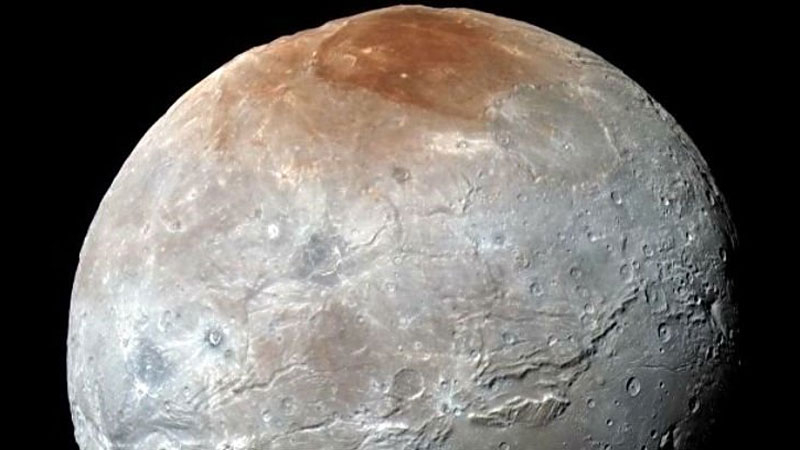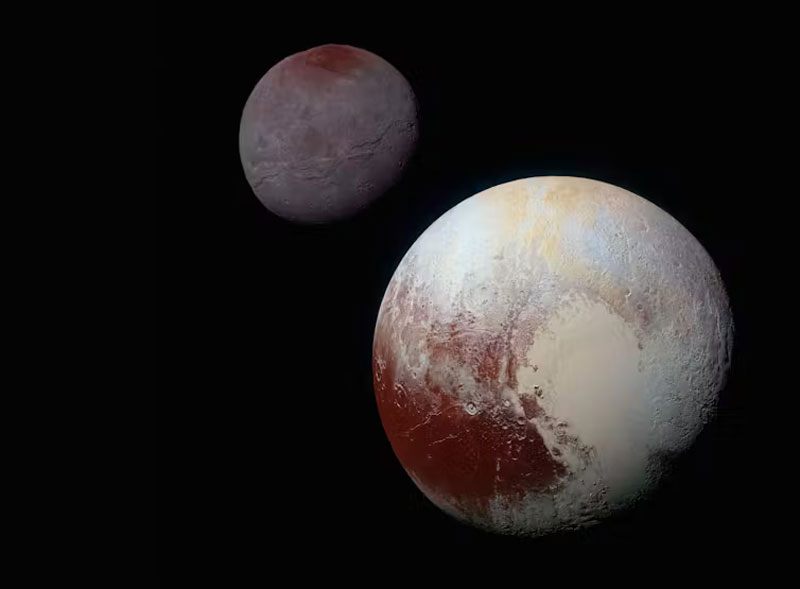James Webb found no relationship between Pluto and its moon Charon


Thanks to the James Webb Telescope, scientists for the first time were able to reliably identify a number of chemical substances on the surface of Pluto’s moon Charone. Billions of years ago, Charon could have separated from Pluto after an asteroid impact, as happened when the Moon separated from the Earth. Charon may also turn out to be an independent object that flew from space and got stuck near Pluto. Studying the chemical composition of the moon’s surface may help solve this mystery.


Charon close up. Image source: NASA
Charon (and Pluto) were observed close only once and briefly, when NASA’s New Horizons robotic station flew next to them. This data was used in the new work, as well as modeling based on the study of Jupiter’s icy moons, as well as laboratory studies on the bombardment of water ice and other substances with photons and charged particles (scientists were interested in the processes of photolysis and radiolysis, which initiate chemical reactions on the outskirts of the Solar system).


Charon and Pluto (foreground)
Charon and Pluto have an unusual orbit. This is due to the fact that Charon is only half the size of Pluto (1200 km versus 2400), and its mass is approximately 1/8 the mass of Pluto. They both rotate around a common center of mass. The Earth and the Moon also rotate around a common center of mass, but it is located inside the Earth and the Moon still revolves around the Earth. In the case of Pluto and Charon, the common center of mass protrudes far beyond the surface of Pluto and, in particular, this was one of the reasons why Pluto lost its status as a planet of the solar system.
Pluto and Charon on Webb’s spectral sensors. Image source: NIRSpec Silvia Protopapa et al. / Nature Communications, 2024
Observation of Charon by scientists from Northwestern University (USA) using Webb spectral infrared instruments for the first time made it possible to reliably determine on its surface the presence of carbon dioxide ice and hydrogen peroxide mixed with water ice (the average temperature on the satellite is -232 °C). This is a fairly important step towards understanding how this essentially double system of celestial bodies was formed. The work also provides insight into chemical reactions at trans-Neptunian objects, where only crumbs of solar energy reach. In particular, photons and charged particles bombard water ice (and water ice with carbon dioxide ice added), turning some of it into hydrogen peroxide.
Studies have also shown that Charon contains less ammonia and methane than Pluto and other objects beyond the orbit of Neptune. This at least makes us recognize Charon as an alien from another corner of the system. But this is not a point in Charon’s study, but only a new episode, followed by a continuation.
Recent Posts
Meta Could Lose $7 Billion Due to Trump’s New Tariffs on China
Meta✴ risks missing out on $7 billion in ad revenue in 2025 due to tougher…
Meta Could Lose $7 Billion Due to Trump’s New Tariffs on China
Meta✴ risks missing out on $7 billion in ad revenue in 2025 due to tougher…
OpenAI Willing to Buy Chrome Browser If Google Forced to Sell It
An OpenAI representative has told a court that the company is interested in buying the…
OpenAI Willing to Buy Chrome Browser If Google Forced to Sell It
An OpenAI representative has told a court that the company is interested in buying the…
OpenAI Willing to Buy Chrome Browser If Google Forced to Sell It
An OpenAI representative has told a court that the company is interested in buying the…
AI chips to be produced on large glass: Nippon Electric Glass to start shipping glass substrates in 2026
The idea of using glass as a material for certain types of electronic components is…